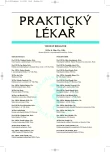History, present problems and challenges in prevention of nosocomial infections
Authors:
M. Schejbalová; V. Bencko
Authors‘ workplace:
Přednosta: prof. MUDr. Vladimír Bencko, DrSc.
; Univerzita Karlova v Praze, 1. LF a VFN, Ústav hygieny a epidemiologie
Published in:
Prakt. Lék. 2008; 88(5): 293-295
Category:
Of different specialties
Overview
It was in 1847 that Ignaz F. Semmelweis ordered the staff of the maternity hospital where he worked to wash their hands between examining patients. A lot has changed in the more than 160 since. The discovery and development of antiseptics, hygienic scrub, use of gloves, improvement and perfection of decontamination processes (disinfection, sterilization) has enabled the introduction and improvement of an aseptic method of nursing, which has had a positive impact on the incidence and spectrum of nosocomial infections. The discovery of antibiotics, immunization programs and other progresses in medicine and other branches of science has led to an extended life-expectancy and a fundamental change in morbidity structure in advanced industrialized world regions. Many infectious diseases have been almost eradicated or their occurrence drastically reduced. It seems that man has beaten infection. But the „golden age” of antibiotics has been relatively quickly replaced by the era of resistance; and nowadays we wrestle not only with novel infectious agents but especially with an increasing number of bacterial strains resistant to a considerable part of the antibiotic spectrum. At the forefront of contemporary problems in hospital hygiene – the prevention of nosocomial infection - is the unrestrained growth in the participation of resistant strains on the incidence of nosocomial infections.
Key words:
I. F. Semmelweis, A. Fleming, antibiotics, antibiotic resistance, nosocomial infection, MRSA, antibiotic spectrum.
Sources
1. Bencko,V., Schejbalová, M., Kapek, J. Od Ignáce Semmelweise k dnešku: Prevence nozokomiálních nákaz – klíčový problém nemocniční hygieny. Nozokomiálne nákazy/Nozokomiální nákazy, 5, 2006, 2, s.1-7.
2. Bencko, V., Schejbalová, M. From Ignaz Semmeelweis to the present: crucial problems of hospital hygiene. Indoor Built. Environ. 15, 2006, 1, p. 3-8.
3. Bencko,V. Odkaz I.F.Semmelweise dnešku, klíčové etapy vývoje a nejzávažnější současné problémy nemocniční hygieny. Prakt Lék. 87, 2007, 2. s. 68-72.
4. Emmerson, A.M., Enstone, J.E., Griffin, M. et al. The Second National Prevalence Survey of Infection in Hospitals - overview of the results. J. Hosp. Infect. 1996, 32, p. 175-190.
5. Faria, J. Vandals at the gates of medicine - historic perspectives on the battle over health care reform. Macon, GA: Hacienda Publishing. Dostupné na http://www.haciendapub.com/vandals.html.
6. Haley, R.W., Culver, D.H., White, J.W. JW, et al. The Efficacy of Infection Surveillance and Central Programs in Preventing Nosocomial Infections in US Hospitals (SENIC). Am. J. Epidemiol. 121, 1985, p. 182-205.
7. Havlík, J., Současné možnosti “ starších” anti-biotik v terapeutické praxi. Klin. Farmakol. 2003, 17, s. 183-185.
8. Hedlová, D. Organisation and critical issuess of hospital hygiene in the Czech Republic. Indoor Built. Environ. 15, 2005, 1, p. 9-17.
9. Hnilicová, H., Bencko, V. Kvalita života – vymezení pojmu a jeho význam pro medicínu a zdravotnictví. Prakt. lék. 85, 2005, 11, s. 656-660.
10. Hygiene Timeline [on line]. Updated January 2004. Dostupné na http.//ww.hygiene-educ.com/en/ learn/history/scidata/frame1.html [cit. 2005-11-25].
11. Janout, V. Klinická epidemiologie – nedílná součást klinických rozhodovacích procesů. Praha: Grada Publishing, 1998, s.145.
12. Kolektiv autorů. Doporučený postup pro kontrolu výskytu kmenů Staphylococus aureus rezistentních k oxacilinu (MRSA) a s jinou nebezpečnou antibiotickou rezistencí ve zdravotnických zařízeních. Prakt. lék. 86, 2006, 9, s. 500-506.
13. Novotný, L., Bencko, V. Příčinnost v epidemiologii a komplexní architektura zdraví a nemoci. Prakt. lék., 2003, 83, s. 321-329.
14. Perlík, F., Jedličková, A., Práznovcová, L. Hodnocení vývoje spotřeby antibiotik a rezistence vybraných bakteriálních patogenů. Čas. lék. čes. 141, 2002, 7, s. 220-222.
15. Public health and technology during the nineteenth century [on line]. Updated October 2001. Dostupné na http://www.ilt.columbia.edu/projects/ bluetelephone/html/health [cit. 2005-11-25].
16. Sobotová, L., Nosková, T., Voleková, J., Aghová, L. Practical training on nosocomial infections in a hospital environment. Indoor Built. Environ. 15, 2006, 1, p. 73-76.
17. Šrámová, H. a kol. Nozokomiální nákazy II. Praha: Maxdorf-Jesenius, 2001, s. 303.
18. Taylor, K., Plowman, R., Roberts, J.A. The Challenge of Hospital Acquired Infection. London: The Stationery Office, 2001.
Labels
General practitioner for children and adolescents General practitioner for adultsArticle was published in
General Practitioner

2008 Issue 5
Most read in this issue
- The late effects of xenobiotics. 1. effect mechanisms and their occurrence in the environment
- History, present problems and challenges in prevention of nosocomial infections
- Violence as a disquieting phenomenon in contemporary health services
- Treatment of tobacco dependence: prevention, diagnosis and treatment in General Practice
